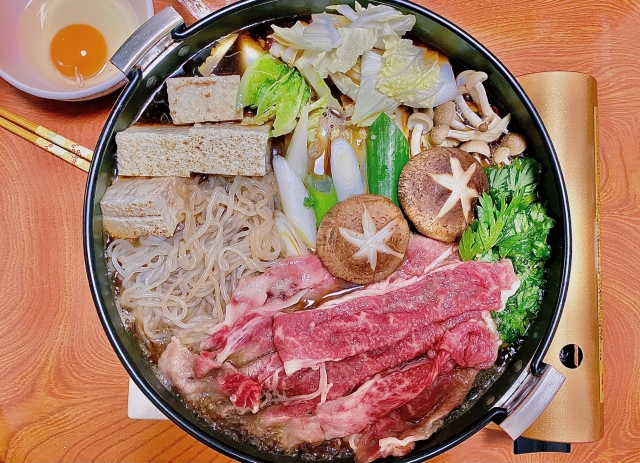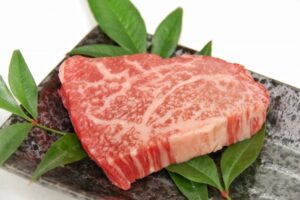What is Sukiyaki?
Sukiyaki is a traditional Japanese hot pot dish where thinly sliced beef and various vegetables are simmered in a sweet and savory broth called “warishita.” It is especially popular during the colder seasons and is enjoyed both at home and in restaurants. There are regional variations, with the Kanto and Kansai styles being the most well-known.

History of Sukiyaki
Sukiyaki traces its roots back to the late Edo period, gaining widespread popularity during the Meiji era. Initially, a similar dish using fish and vegetables existed, but with the introduction of beef, the modern version of sukiyaki emerged.
Characteristics of Sukiyaki
Kanto Style: In this style, warishita is prepared first, then the ingredients are simmered in it. The broth is made with soy sauce, sugar, mirin, and sake.
Kansai Style: This style starts by grilling the beef in the pot, then adding sugar and soy sauce for seasoning. Vegetables and other ingredients are added afterward, and no warishita is used, highlighting the natural flavors of the ingredients.
Ingredients of Sukiyaki
- Beef: Thinly sliced, high-quality marbled beef is typically used.
- Vegetables: Common vegetables include shiitake mushrooms, enoki mushrooms, chrysanthemum greens, and scallions.
- Tofu: Grilled tofu is preferred as it absorbs the flavors of the broth.
- Shirataki: A type of konjac noodles that adds texture and absorbs the broth’s flavor.

How to Make Sukiyaki
- Preparation: Slice the beef thinly and cut the vegetables, tofu, and shirataki into bite-sized pieces.
- Cooking in the Pot:
- Kanto Style: Add warishita to the pot and simmer the ingredients sequentially.
- Kansai Style: Start by grilling the beef in the pot, then season with sugar and soy sauce, followed by adding the vegetables and other ingredients.
- Finishing Touch: Traditionally, the cooked ingredients are dipped in beaten raw egg before eating for added richness.
Nutritional Value and Health Considerations
Sukiyaki is rich in protein and iron due to the high-quality beef. However, the sugar content in warishita and the consumption of raw egg can increase calorie and fat intake, so balancing the portions is essential for a healthy meal.
Cultural Significance of Sukiyaki
Sukiyaki holds a special place in Japanese cuisine as a communal dish often shared with family and friends. It is a popular choice for celebrations and special occasions, fostering warmth and togetherness around the hot pot.
Sukiyaki’s sweet and savory flavors have made it a beloved dish not only in Japan but also internationally, as people appreciate its comforting and hearty nature.
Comments